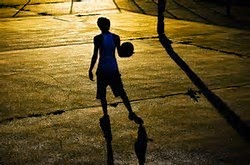Problem Solving involves LOTS of thinking and planning, and then
a little bit of solving, and then hopefully some more thinking about
reasonableness. We help our students when we spend time having them practice
the thinking A LOT. Here are some ideas that I have seen that really help
students:
- Think about important vocabulary from the standards, like joining, separating & comparing and composing & decomposing (even use motions to help them remember the meanings).
- After they are able to describe what is happening in the story (we are joining boys and girls to find total students), then talk about what operation goes with that vocab word. “If I'm joining would that be adding or subtracting?”
- Remove the numbers until kids have thought through the problem and are able to tell you a "word number sentence" (number of books on each shelf x the number of shelves = total books)
- Talk about the differences in the operations (Joining can be adding or multiplying, but I know to multiply when my groups have the same amount, or are equal.) and have them "DIG" on each operation.
- Subtraction is when you take things away from the total, or separate things. When I take cookies from the cookie jar, it has less cookies.
- Instead of only having students share different ways to solve a problem, see if they can share/explain how they knew what operation(s) to use and/or why an answer is reasonable or unreasonable.
- Have them find some text evidence to show how they know what to do and why their operation fits. (Example: it told us how many blue flowers and how many yellow flowers and it's asking for the total flowers, which tells me I am going to add them together to figure out how many yellow and blue flowers there are all together.)
- Justify for reasonableness: thinking after solving to make sure your answer makes sense is important. Kids struggle with this, so the more we practice, the better! A great way to do this is by using estimation (rounding or compatible numbers). It's also a great time to bring in a tool to help them think about reasonableness. For example, if I'm doing 24x8 I could think about money. 24 is really close to 25, which is the value of a quarter. My answer should be around 200 because I know that 4 quarters equal $1 and 8 would equal $2, which is 200 cents.
- Model this thinking aloud (for understanding the problem, the operation, or reasonableness) when you are doing the "I Do" (mini-lesson) to give them ideas of how to think deeply about story problems.
Just remember to always value and encourage the time our
students spend and NEED to make a plan! This up-front work will make all the
difference!








